
Choosing a decorative shrub for the garden, each of us is guided by his own considerations. But in any case, for whatever purpose is not selected plant, very well, if it is not particularly demanding to the growing conditions.
Mountain ash-one of those shrubs that will be grateful to you just for the fact that you took them into your community of plants. It will be a bright pink spot in the spring, will give a lush bloom of white or cream flowers on a background of lush greenery in July and autumn will be painted in rich red and yellow.
Botanical reference
Mountain ash (sorbaria) belongs to the family Pink. Its Latin name comes from “sorbus”, which in Latin means”mountain ash”. If we consider the leaves of the Bush, it is obvious similarity with the leaves of the well-known tree. In length they are 20-30 cm, pinnate, with 9-15 pairs of leaves.
In my opinion, they have the same flowering. Only Rowan blossoms in spring and has corymbose inflorescences, and mountain ash — in summer and acquires panicles. Themselves small flowers similar in appearance a bit fluffy because of the long stamens with anthers.
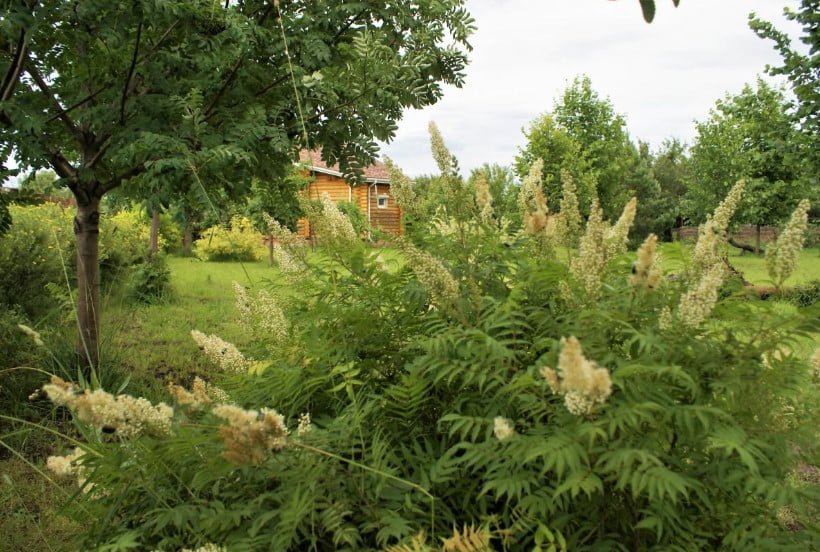
In the genus of 10 species that grow in Asia. The maximum height of mountain ash is 6 m, but those 5 varieties that are more or less common and used in gardening do not grow above 3 m.
Almost all encourage each year to provide a lot of root suckers, thus forming a picturesque thickets. Bloom very abundantly for 30 days and attract a variety of insects in large numbers. Despite the available varieties, gardening is used, as a rule, only a few species.
Sorbaria arborea
This species is sometimes known as the Kirillov Fieldfare. It is a lush, but neat Bush, the leaves of which are raised above the ground. It is the highest of mountain ash, it can reach 6 m in height.

Blooms of white pyramidal panicle flowers in July-August. Winter hardiness is high enough, can withstand temperatures up to -25°C.
Sorbaria pallasii
This plant, on the contrary,is the lowest of the mountain ash. Its height is not more than 120 cm, more often — up to 80.
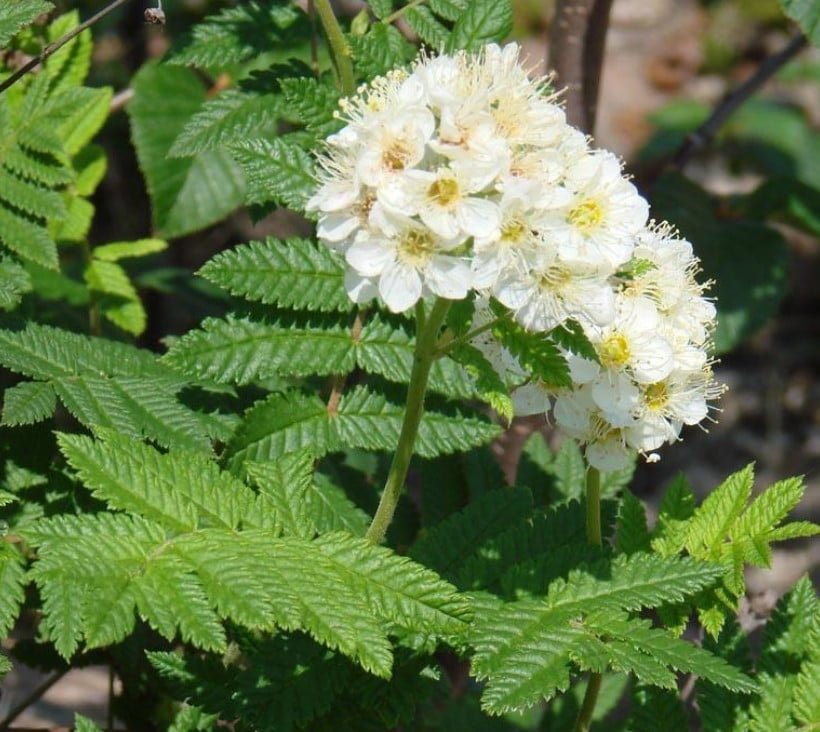
Blooms small brushes back egg-shaped size from 2 to 8 cm in comparison with other types of mountain ash, some white flowers of this species are quite large — up to 1.5 cm in diameter.
Despite its endurance and precocity (seedlings bloom in the first or second year), the design is used infrequently. The main drawback — the fragility of the stems, which requires regular removal.
Sorbaria tomentosa
Sorbaria tomentosa grows up to 6 m in height and acquires a fairly wide crown — up to 4 m in diameter. This plant is not of particular interest to gardeners. It blooms rarely, winter hardiness is quite low.
Sorbaria sorbifolia
This species is a real favorite. It is readily used in the design of gardens. It grows to a height of 3 m and actively increases erect shoots, annually giving a good increase. Large unpaired leaves about 25 cm long are very similar to Rowan, hence the double mention of the tree in the name.
Young leaves on it can be seen in early spring, the Bush wakes up one of the first. Blossoming shoots at this time are painted pink. Later, the plant is covered with light green leaves, and in autumn the color changes to red and yellow. A Fieldfare English decorative entire season.
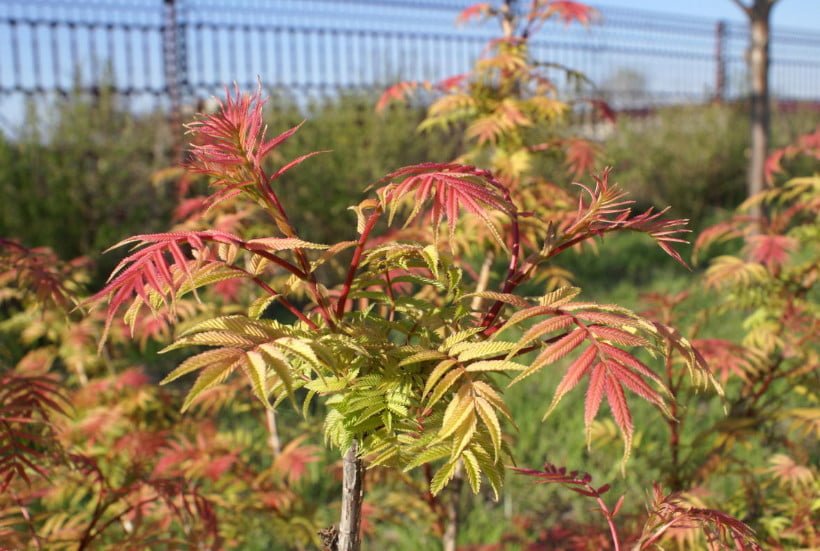
At the time of flowering, and this happens in July, the Bush is covered with numerous fluffy and long (up to 30 cm) panicles of white flowers. This is a great honey plant, it attracts a large number of pollinators, including beetles.
Flowering lasts about a month. Dried inflorescences do not look very aesthetically pleasing and require removal. However, this procedure can be carried out in early spring during sanitary pruning.
The most popular two varieties:
- ‘Stellifila’ — is particularly hardiness and original brownish pubescence of leaves;
- ‘Sem’ is often chosen for hedges, as it gives a less aggressive growth.
Ornamental plants, though tough, high winter hardiness. In different sources you can find information that the shrub can withstand a decrease in temperature to -25°C. However, based on my experience, I can say that in the middle band this mountain ash well tolerated freezing to -32°C.
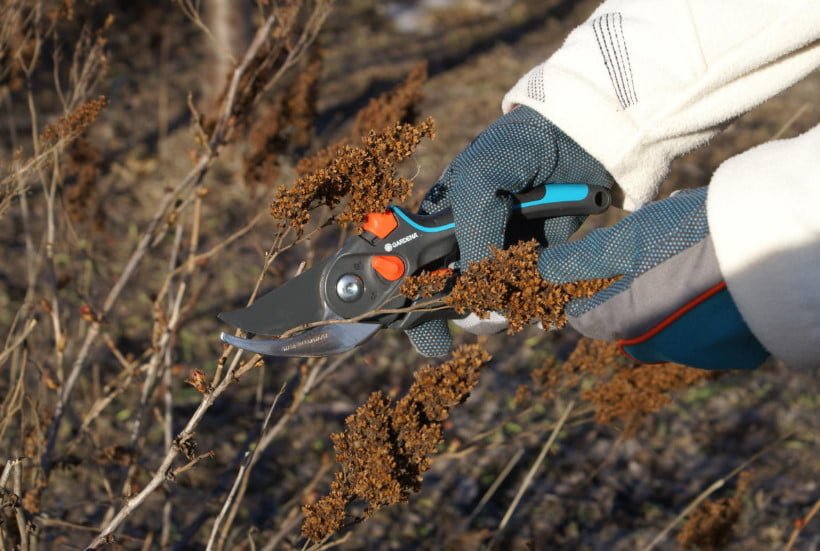
In nature, mountain ash grows along the banks of water bodies, so it normally withstands short-lived flooding, but less resistant to drought. Therefore, in a particularly hot period requires watering.
Growing of Sorbaria sorbifolia
Indeed, Sorbaria sorbifolia is a very easy-to-care plant. Easily propagated by root suckers, cuttings and woody cuttings, growing from seed is more difficult.
Place of growth is not particularly important, this plant will feel good in the shade and in the sun. However, it is preferable to place in partial shade on moderately moist rich soils. Planted on a permanent place mountain ash is best in the spring. The first time requires attention: timely watering, weeding.
As a rule, this plant is not subject to diseases and attacks of pests, which is another plus in favor of having it on your site. However, there is also a certain danger. So, if the shrub still was struck, the owner is not always on time this attaches due importance.

Pests that can attack the mountain ash, create problems and many other plants. It’s aphids and spider mites. Detect aphids is not difficult. Spider mite manifests itself as white dots on the leaves. Get rid of parasites can be insecticidal means, of which many are offered for sale.
The disease occasionally affects a Fieldfare, a viral mosaic. It is impossible to get rid of it completely, but there are means minimizing harm. In addition, it is worth remembering that from such a disease suffers, as a rule, the plant is oppressed, with low immunity.
Sorbaria sorbifolia in the garden design
Given the above, we can conclude that this decorative shrub is very profitable to have in your garden. It has an attractive appearance, abundant and beautiful flowers, easy to reproduce, is a good honey plant, as well as undemanding in care and shade-tolerant.

Mountain ash can be a bright accent in the garden. Usually it is used in group landings, but perhaps a single placement on the lawn. However, in this case, it is necessary to take into account the active emergence and spread of overgrown. This can be solved once and for all by burying a protective ring around the planted plant, since its roots are not very deep.

Sorbaria sorbifolia makes an excellent hedge. It can replace hawthorn, dogwood or arborvitae. Mountain ash quickly grows and tolerates a haircut, so many choose it as a plant for a green fence or backstage.
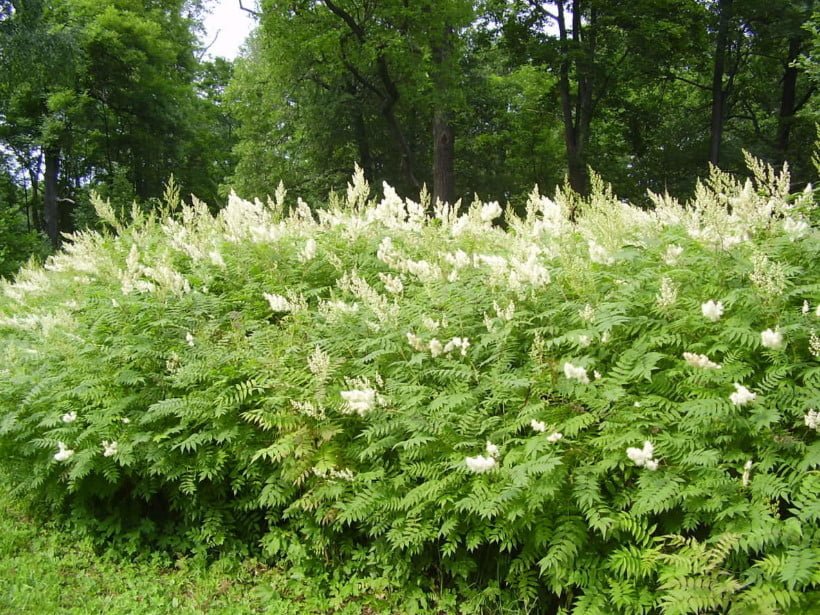
This shrub is well suited proximity to the pond. On the one hand, it will not suffer from lack of moisture, and on the other — will help to strengthen the soil on the shore, as the root system is dense. For the same purpose it is planted and on the slopes.
Grow this shrub well covers the garden corner, even the shadow. In group plantings, the Fieldfare looks interesting along with the different types of Spiro, especially yellow leaves. White panicles of flowers favorably shade conifers. In General, the Fieldfare looks very natural, “natural”, so is suitable for any informal style.
Find a place on your site for this wonderful shrub, modest in its unpretentiousness, but can become an excellent member of the garden “family” of ornamental plants.
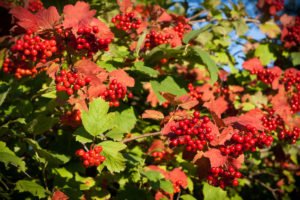


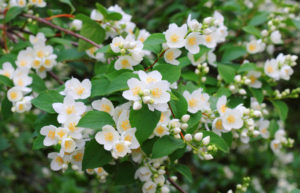
Leave a Reply